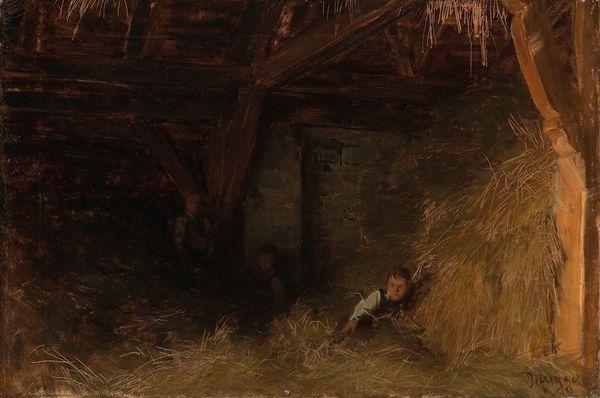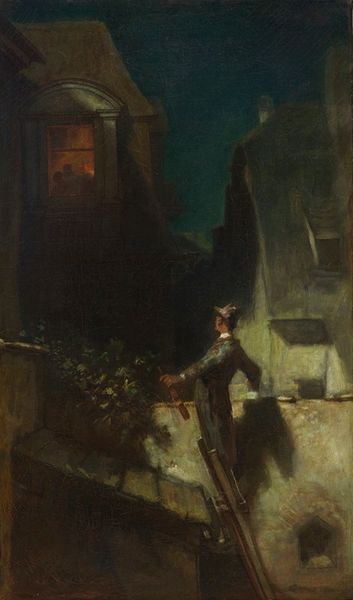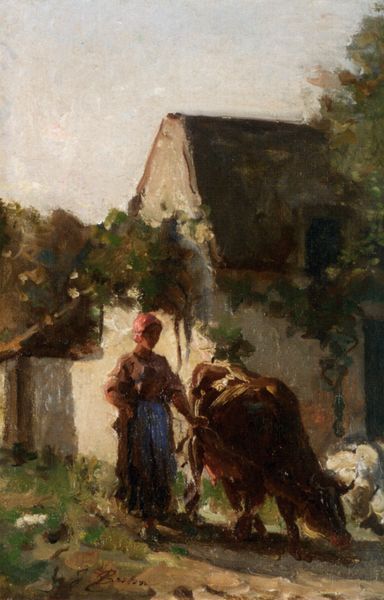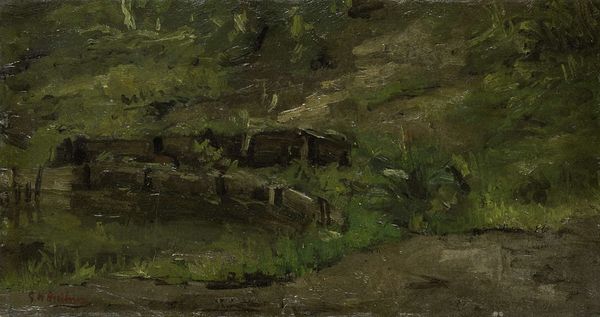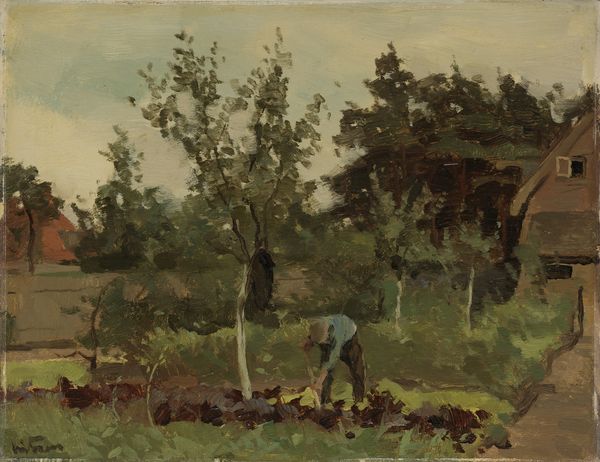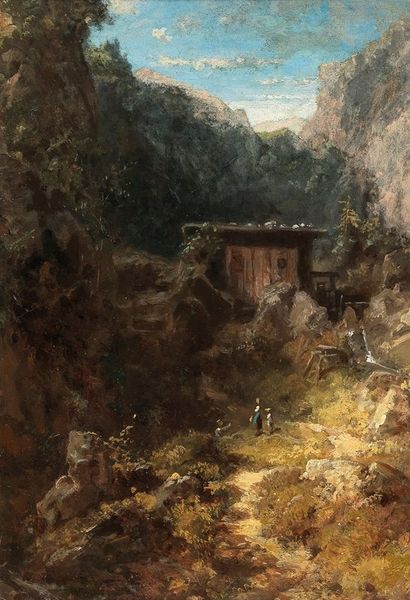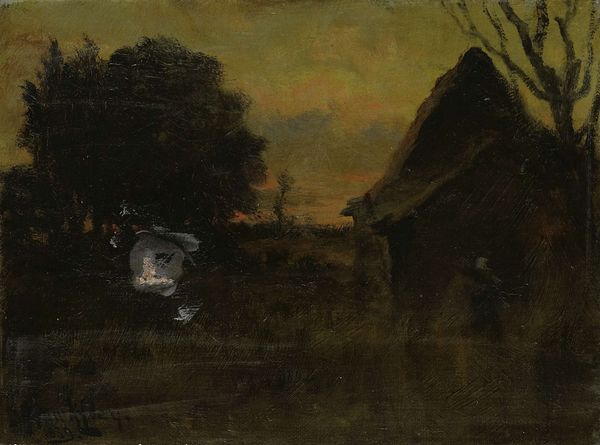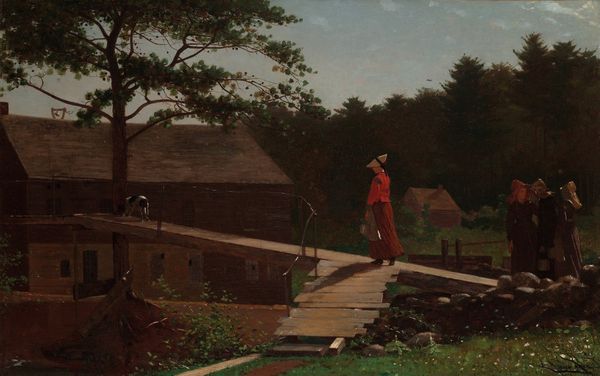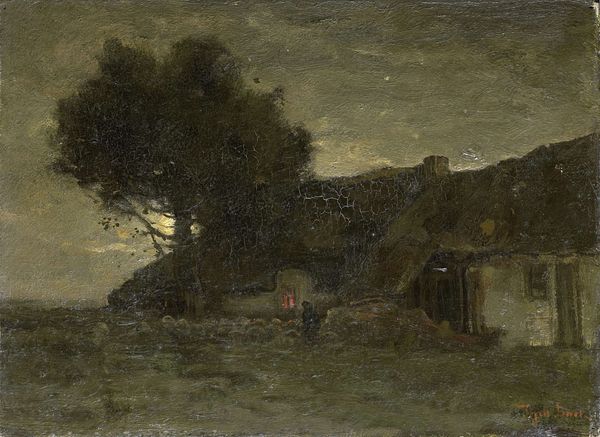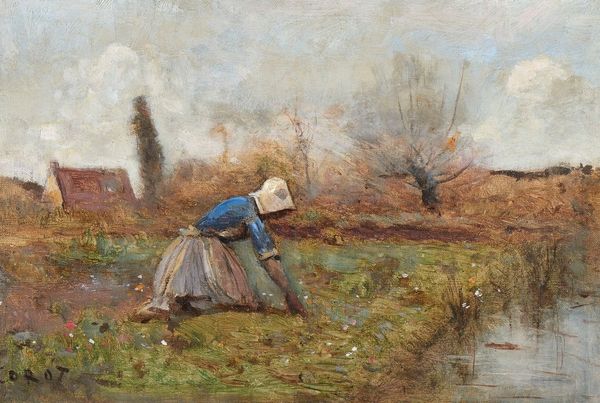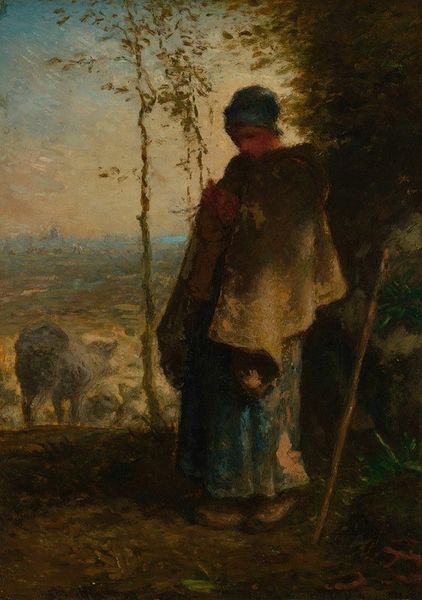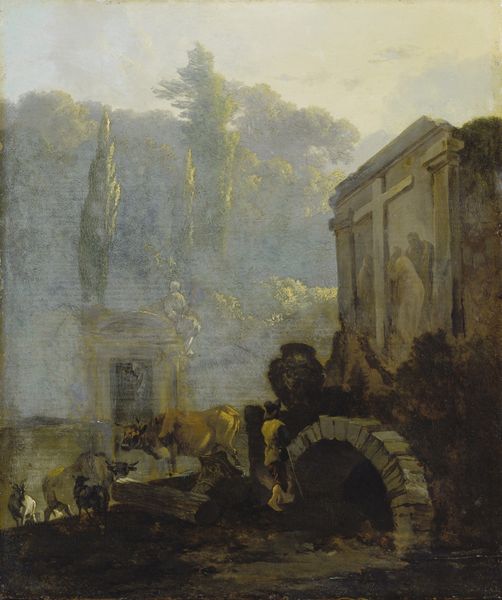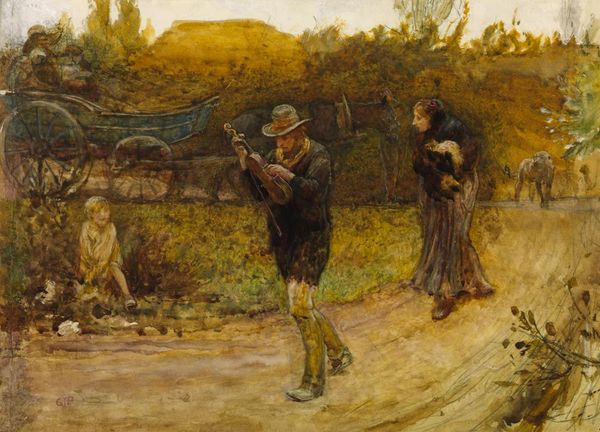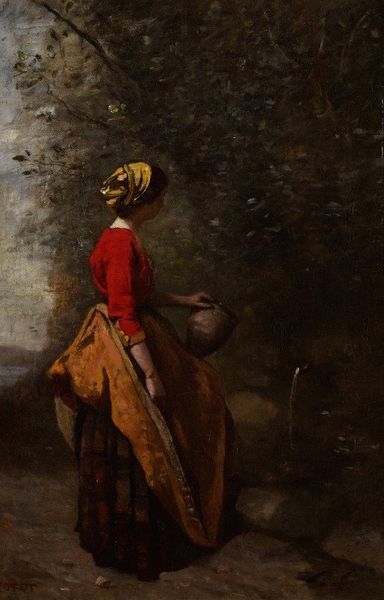
painting, plein-air, oil-paint, watercolor
#
painting
#
impressionism
#
plein-air
#
oil-paint
#
landscape
#
figuration
#
watercolor
#
genre-painting
#
watercolor
Copyright: Public Domain: Artvee
Curator: Winslow Homer's "French Farmyard," painted in 1867, captures a seemingly simple scene of rural life. Oil on canvas, its textured surface and subdued palette invite contemplation. Editor: It certainly does. The immediate impression is one of muted stillness, almost melancholic. The rough textures create an atmosphere that borders on austerity. Curator: Indeed. Painted during Homer's time in France, this work offers insight into the societal constraints faced particularly by women and children. Notice how the architecture confines the figures in the composition. Editor: It’s quite clever actually: the rigid geometric doorway and the stark planes of the stone walls definitely juxtapose against what little organic form we do see in the verdant nature beyond that doorway, subtly heightening a sense of entrapment. The baby is herself "framed" by the harsh angles of the walking frame. Curator: Precisely. This work transcends a mere depiction of everyday life; instead, it is a telling representation of social determinism, the structural and infrastructural constraints placed upon women, mothers, and young girls in particular, at this time in history. Editor: On the other hand, notice the use of color to soften some of the edges, visually if not conceptually, undercutting that very feeling of total confinement that the geometric elements instill. And what is the emotional register there? Is it actually as confining as the visual metaphor seems to suggest? Curator: It's the emotional complexity that underscores the narrative power of the piece, offering us a lens to view how individual freedom may be curbed by systemic norms of gender roles and domestic life during this era. Editor: Looking at this work again, I find myself drawn back to the relationship between the child and her walker, as it seems like a nascent architecture of her life. This is truly an object lesson in formalist constraints that also happen to be, historically speaking, literally real. Curator: This has deepened my appreciation of the artwork and Winslow Homer’s sensitivity to not just the artistic elements of the landscape but how social dynamics permeate the visual language of painting. Editor: I concur; seeing the way that line, form and content can synthesize a statement, is quite satisfying here.
Comments
No comments
Be the first to comment and join the conversation on the ultimate creative platform.
